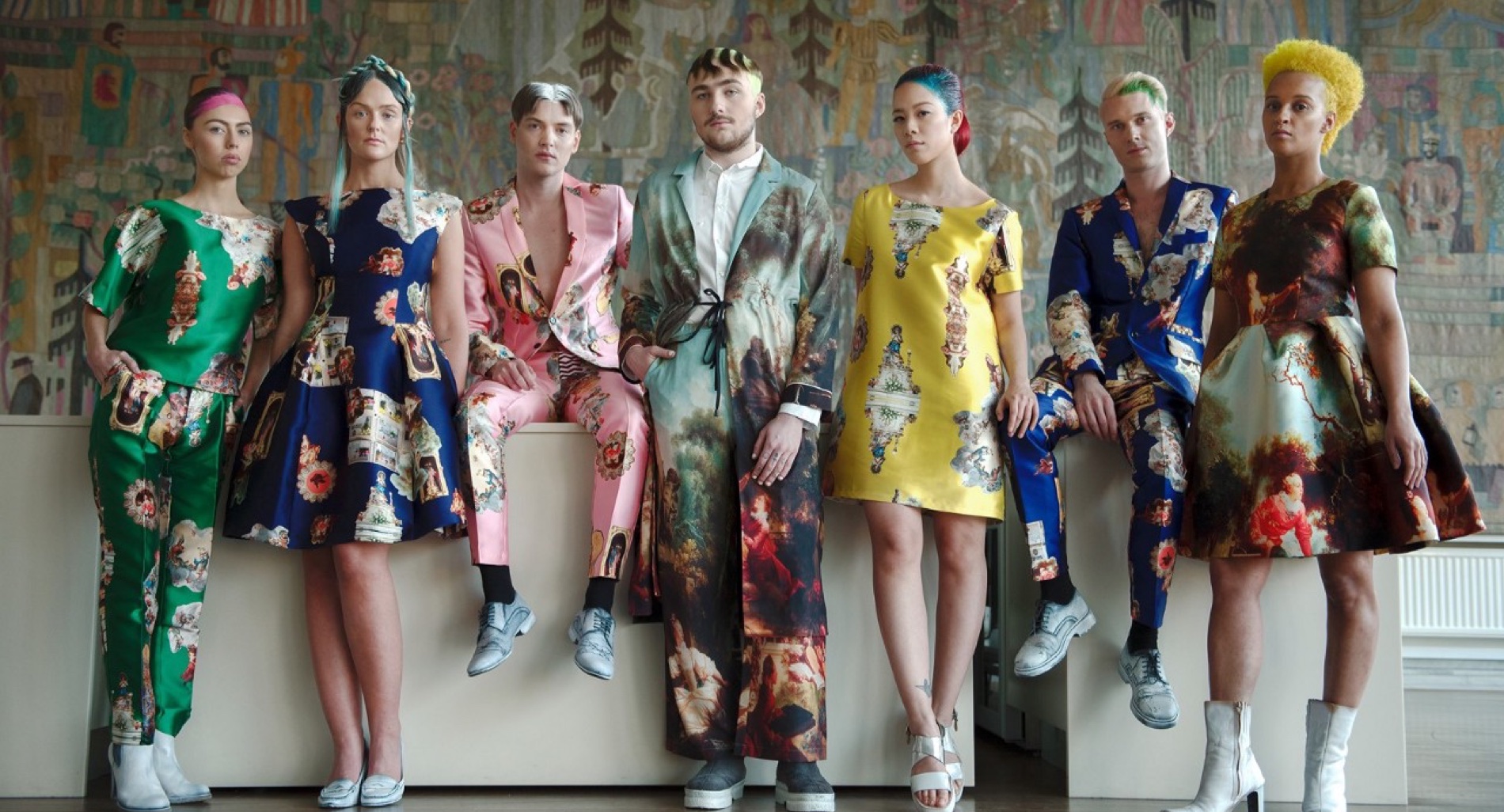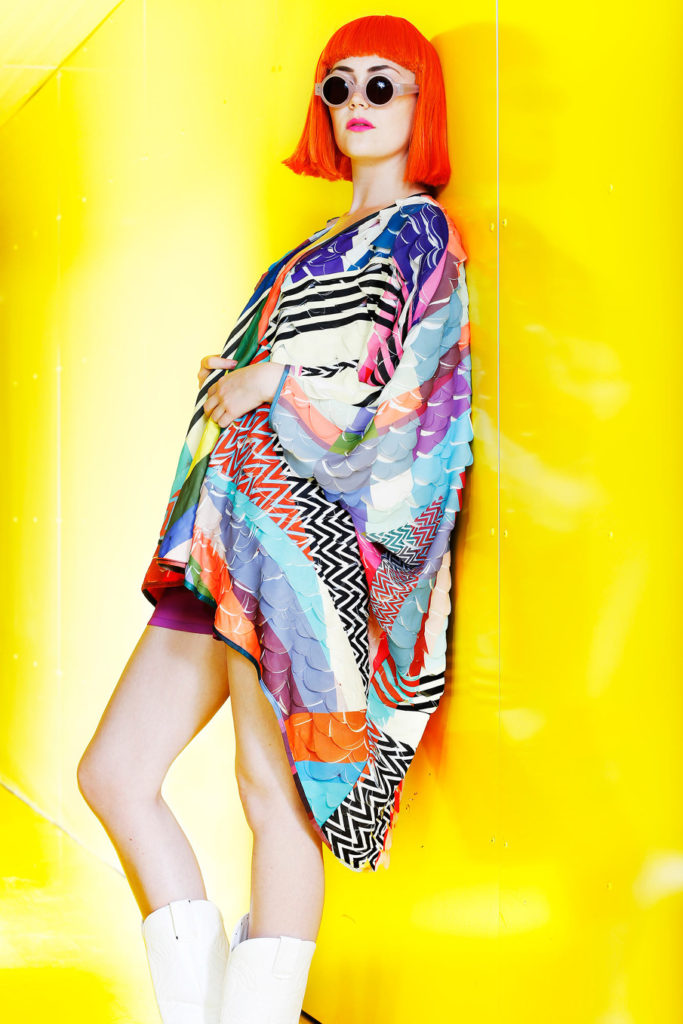Swedish designer, Maxjenny Forslund, started her luxury Copenhagen-based clothing brand, maxjenny! in 2017. She owes her fame to combining clean lines, bright colours, and handmade colourful prints, which she designs using only a digital camera, a pencil, and a computer. The brand aims for 100% recycled or other sustainably sourced materials, and selects less intensive modes of transport — they deliver by bike in Copenhagen. maxjenny!’s upcoming outerwear is made in a recycled pet bottle fibre fabric with re-down and all prints she makes are all made with GOTS approved ink through certified processes.
maxjenny! doesn’t mass produce. This is a big step to promote a structure for sustainable fashion. In addition, Maxjenny!’s seasonal collections don’t contrast one another, but they complement each other, making them easier to reuse. Today, fast fashion produces 10% of the world’s emissions, the second most polluting industry on Earth, right behind oil. Fast Fashion’s negative impact includes the use of cheap, toxic textile dyes — with the fashion industry being the second largest polluter of clean water globally after agriculture.
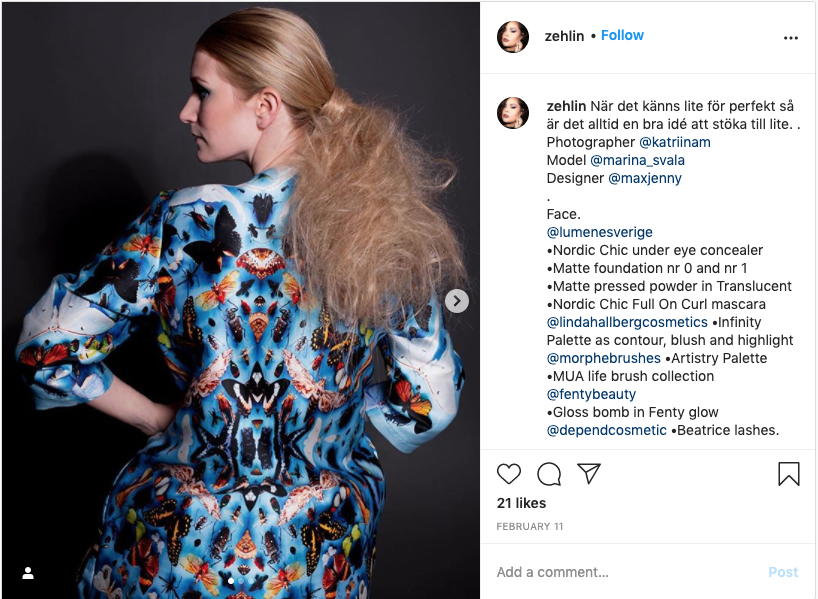
I would like to learn more about your creative process. You take most of the photos that subsequently become prints. Can you tell us more about your method and technique?
Both yes and no. I take photos. I cut and paste. I don’t know what I’m doing, but after a while I see something and then the things I see around me trigger my creativity, and from there it’s a long process. You need to leave your work for a week or two. Take a break. Open it up again. Clean up. You see new things. Work with the colours. Make new combos. Try out everything. Kill some of it. Collect. Then it’s finished. Maybe…Then make variations. Then you’re ready.
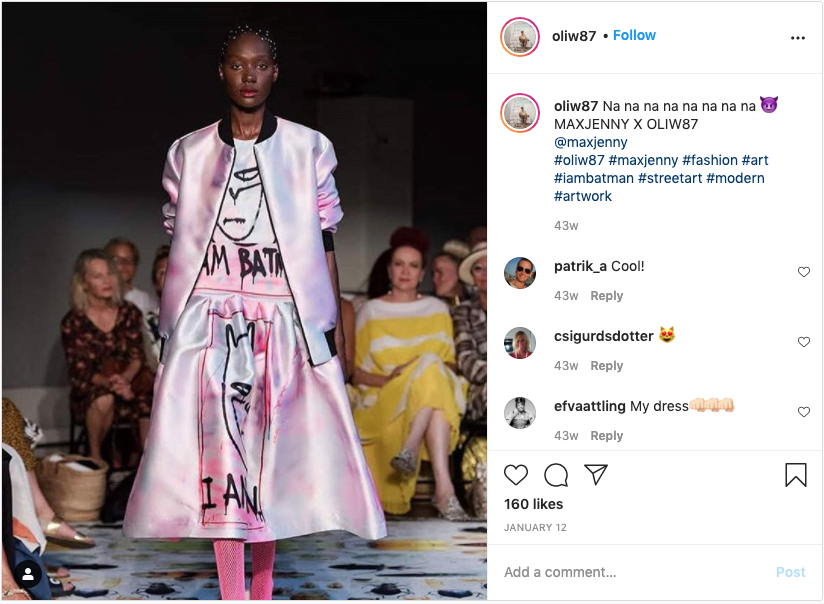
On your website you say that your approach to fashion is more artistic than other brands. In what way?
I only work with statement clothing, the dot over the ‘i’. I don’t do anything plain and I don’t work with repetition in my prints, either. In this way, every piece becomes unique. I do big artworks which I can flip over — in that way I get repetition on 2,5 meters, so I work more like an artist, than doing moodboard over something in order to find my way through.
In an interview you said, “I’m based in Copenhagen which means I dare more than average”. I see how Copenhagen is a bit more daring than its neighbouring Scandinavian countries, but don’t you think that saying people “tend to overdo here,” when it comes to their fashion choices, would be an overstatement compared to places like London, New York, Milano, and Tokyo?
Of course they are, but I’m not physically there, exposed to those places on a daily basis. I was talking about where I circulate — my hood, my backyard. Girls going out in their pyjamas buying bread, girls wearing “shitty” dresses over denims with dad sneakers, people wearing Vibskov from head-to-toe, people synchronise patterns or colours in a full maxjenny suit. People don’t do this in Stockholm, for example, which is where I divide my time. In Stockholm people are much more well-dressed, tailored, and royal — they wear their wealth.
I specifically go to fashion and art events in Copenhagen, and it’s so inspiring. Yes, we overdo it here, in the good sense — this doesn’t mean it’s always crazy. Small details here and there make it supercool.

From an international point of view, Scandinavia is rather homogenous, and monochrome fashion dominates. You rarely see bright colours or crazy patterns. You see many Danish women wear flower prints and maxi dresses in summer, but it still seems more of a local trend. This is probably rooted in the Scandinavian culture, in the concept of “lagom”, as you say in Swedish. Hasn’t this conformism in fashion represented an obstacle for your career growth, since your style is so colourful and a bit over the top?
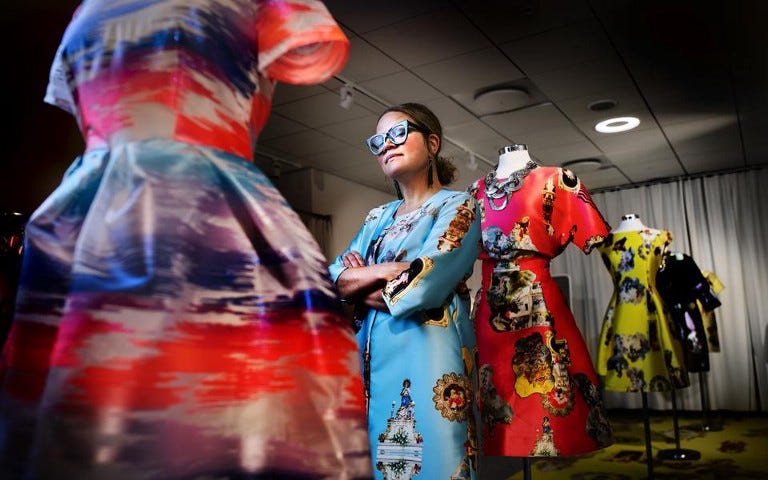
No not at all. The concept of “lagom” has never really crossed my mind, even though I know it is there. Perhaps my upbringing doesn’t make me think about it as much as other people. I was brought up on 2500 m2 (my childhood home) where “big thoughts” were normal, everybody believed in themselves, everything was possible. This was embodied in our high ceiling — it gave us a lot of thinking space. Our kitchen was 100m2, whereas my flat in Copenhagen is 95m2.
I wasn’t brought up in this “lagom” mindset nor following “The Law of Jante”. I was brought up where the Memphis Group was present, there were mirrors everywhere, the windows were larger than the walls, everything was over the top, you could do anything (even though you had to do it yourself) and you created everything out of nothing. The world came to us. Even so, I was always dressed in second-hand, and we ate fresh carrots — my mum had a deal whereby she could exchange the carrots for clothing; she is a fashion designer and a farmer’s wife.
The vivacious prints of this brand have attracted many celebrities, like Madonna, and the Crown Princess of Sweden, Victoria. maxjenny!’s customers like to dare. Were you already socially connected to these people or has the brand spoken for itself?
I did not know anyone, really. The brand genuinely spoke for itself. I think this is amazing and shows how good design can travel on it’s own and reach so many people — solely thanks to the way it looks. Also, I have never given clothing away for PR — that has gained me respect.
Victoria, the Crown princess of Sweden, wore my Stockholm Royal Pink dress in Spring 2017. This meant so, so much to me. It gave me access to the Swedish high-end market. I am so grateful for that. The princess wearing my brand several times has made me gain popularity much faster.
What would your advice be for the Next Gen to succeed in this incredibly competitive environment?
I come from a furniture design background, so I really didn’t know anyone within the fashion industry. I have now met so many nice people. I think the future generations should be aware that this is a hard field to be in. But also the best one.
I am unafraid and know that if you want anything, you need to work for it. I mingle a lot and always try to speak to people I don’t know. I think this is the best and smartest thing one can do, but at the same time, it can be challenging to go to events on your own; you are forced to make acquaintances. If you go with your friend you tend to stay together. It’s as easy as that.
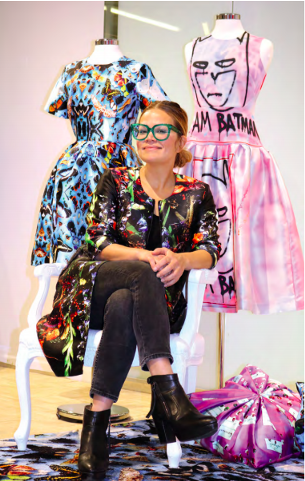
Regarding the advice I want to give to the next generations, it’s hard. I think you need to do something different. I don’t understand the logic of copying other people and products when there is an abundance of choice and potential for originality. Second: don’t make ‘everything,’ narrow it down, specialise in something particular. Third: align yourself with people who are better than you in other areas (that’s the trickiest part.) Fourth: be smart; work with the lowest hanging fruit. Five: work efficiently, nobody is impressed by somebody working around the clock. Six: overdeliver. And last: always be nice, don’t be an arse.
What sparked your interest in fashion?
I was brought up in a family of designers; my mum is a fashion designer who worked worldwide and I was given a book by my father when I was an early teenager about The Memphis Group — I seriously think that book made me interested in furniture and interior design at first. I have wanted to work with design as long as I can remember.
I’m an autodidact, when it comes to fashion design, but, as I was raised in a family of fashion designers, I think I got it with the breastmilk. We have had a production factory and design studio close to home so I know the full process. We even produced for others so I know every aspect of the making process. From coming up with the idea, to buying fabric at Premiere Vision in Paris, producing the photoshoot, exhibiting at fairs, etc.
Specific people have also really influenced my journey; namely, the Memphis Group, Ettore Sottsass, and Anna Piaggi — I was in love with her before I knew anything about design. She is the coolest woman on earth.

Is there any mindset or approach or technique you learned while designing furniture which you brought into fashion design?
I’ve learned that small details and contacts are EVERYTHING. And that it’s important to let the ones who are experts in their field do what they do best, so that I can focus on my things. I’ve learnt I shouldn’t try to do everything myself, because it won’t work and the product won’t be desirable. It’s not easy to take a step back, though!
You write on your website “I listen to what customers want, and then I develop new items behind the curtains”. How do you develop for others in mind whilst focusing on the direction you want to take? Doesn’t this become confusing?
Not at all. At the beginning, I didn’t have any gala dresses or skirts and many of my new customers asked for outfits for the upcoming Nobel prize gala. So I quickly developed styles for them. It was a huge success. Now folks have been asking for shorter down filled jackets, tighter, so that’s coming up together with fab knits. Next summer there will be plissé and more flowy dresses. It’s a wonderful gift to be able to interact with customers.
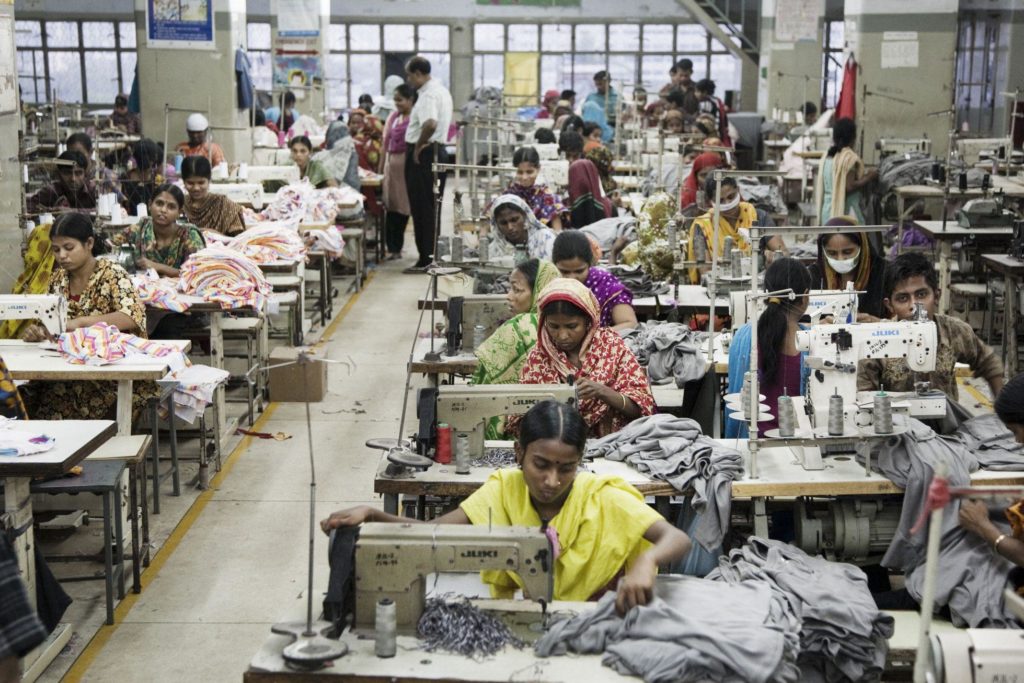
You work sustainably. And your clothes are semi-couture, which means they can’t suit every pocket. Today, most of the fast fashion is low-end, making it cheaper and more affordable, causing its impact to be much bigger. People who don’t have a lot of budget to spend can decide to buy fewer clothes and from sustainable brands, and to buy from second hand shops. What else can we do? Should we avoid buying clothes produced in specific countries because workers are exploited there? Should we learn to read the labels and avoid buying some materials?
This is a really tricky question and I really don’t have a smart answer. If larger chain stores can make small collections of sustainable, beautiful products and get credit for them, why don’t they make their whole collection sustainable? Sustainable products tend to sell very well.
I think larger organisations are the ones who need to foster the public. Don’t you think they are the ones who can make the greatest impact? They are at least big enough to make the change visible.
Do you take a hard-line on non-sustainable clothing, or would you be open to wearing certain pieces yourself? Where do you draw the line?
I only wear my own collection and complement with second-hand luxury pieces. It’s the perfect mix. I would never buy a new pair of denims, never. The worn, second-hand ones are the best!

In a Swedish interview you say maxjenny!’s best customers have been established through contact networks, where a central person acts as a micro-influencer. Do you have a big global network you can rely on?
Absolutely not. I struggle more than most (I feel) as I think I don’t know “anyone” or have a big contact network within fashion to rely on. I’ve had the chance to experiment what it’s like to interact with one person who has a big network; if that person introduces the brand to others, then the rest will follow, and it’s fantastic, impressive.
I love working through my network, but it’s hard to find people with a big following and also willing to share, so you just have to be curious and talk to people as much as you can, you have to ask around. I’m curious and love talking to people so; so far, so good.

The prints in your collection, “Sicily / Royal Stockholm” are images you took in a small church in Caccamo, Sicily. How did you find that small, almost unknown, church? In general, how do you find the subjects of your prints? Do you stumble upon them while always being open to the possibilities life offers you? Or do you research thoroughly after finding a theme?
My friends had just recently bought a property in the quite poor village of Termini Imerese, Sicily. They showed us around and we ended up in Caccamo, so yes I absolutely stumble upon my possibilities and I grasp them by chance.
I don’t plan what to do, it rather comes to me. I am very open, I see patterns everywhere and I have eyes in the back of my head.

